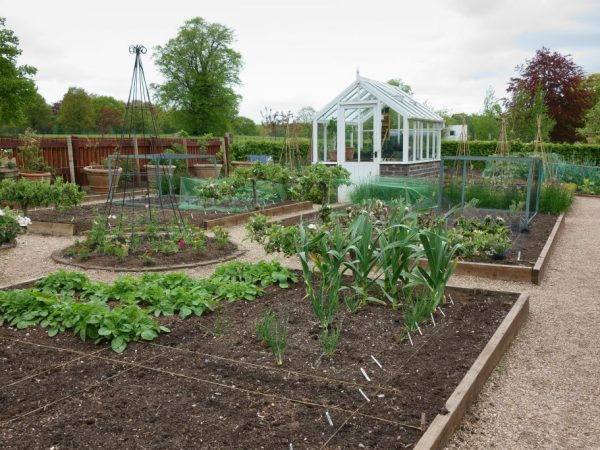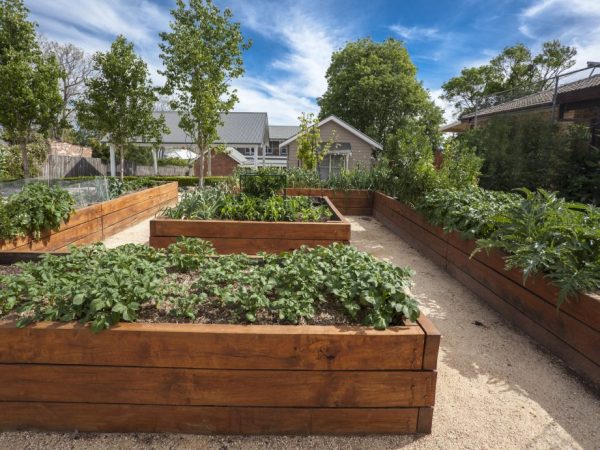Rules for planting potatoes in the beds
One of the most common cultivation methods is to plant potatoes in the beds. This is a great option for planting tubers for lazy gardeners.

Rules for planting potatoes in the beds
Pros of planting potatoes in the beds
Thanks to planting potatoes in beds, you can avoid loosening the soil and hilling. This makes it possible to grow crops on any soil, even the poorest loam.
Also, the pluses include:
- convenience of watering the ridges;
- saving space on the land;
- increased productivity.
Narrow beds
Most often, potatoes are planted in narrow ridges. Before this, the site is cleaned of weeds and its rhizomes. Weed removal is essential. This eliminates frequent weeding and greatly facilitates the work of gardeners. Also, the earth is leveled with a rake, simultaneously breaking large clods.
Even before the start of field work, the location of the ridges is planned. In the future, they will not change, and the row spacing is not dug at all: this simplifies the autumn digging, and also reduces the consumption of fertilizers. Narrow ridges take up one third less space on the site.
Features of narrow ridges:
- Dimensions - width 45 cm, length - up to 9 m. Such dimensions are convenient for watering and fertilizing.
- The ridges never loosen or huddle, because the root system of the potato is in the upper layers of the soil, and it is easy to damage it.
- With good watering and feeding, the culture rises quickly and gives a high yield. In the southern regions, thanks to planting in narrow ridges, the crop is harvested 2 times per season.
Warm beds

The potatoes are protected from the cold
Planting potatoes in beds on clay soils or in adverse weather conditions can be done in the so-called warm ridges. This method is especially good for early varieties.
When planting sprouted tubers, 1 tbsp is placed in each hole. l. vermicompost and wood ash. The cells for planting potatoes on the garden bed are dug in 2 rows in a checkerboard pattern. With small morning frosts, ridges with planted or already risen potatoes are covered with straw or freshly cut grass without seeds. Warm ridges on cool days are covered with plastic wrap
To protect the soil from adverse weather conditions, the potatoes are covered with mulch. Mulch retains heat and moisture well, improves germination of potatoes and inhibits weed growth. For mulching potatoes, use:
- tree bark;
- compost;
- humus;
- hay;
- spruce needles.
Beds-boxes
There is another way to grow potatoes. With this method of growing, potatoes are protected from cold weather and sudden changes in temperature. The box is easily closed with a film or other covering material.
Making a bed-box
To make the box you will need:
- boards (old ones can be used);
- nails or screws;
- varnish or paint.
It is not recommended to use flat or wave slate as a basis for ridges. The asbestos used in their production poisons the soil.
- Boxes are made for more than one year.In order for the tree to serve for a long time, it is treated with paint or varnish. Some people practice burning boards with a blowtorch. The easiest option is to whitewash with slaked lime.
- Wooden boxes are made up to 6 m long. The width should not exceed 1 m, and the height - 40 - 50 cm. For convenience, when caring for potatoes, the distance between the boxes should be 60 cm. The boxes are filled with sawdust, rotted compost, peat and sand.
- Sprouted tubers are placed in the holes in 2 rows in a checkerboard pattern. They are sprinkled with earth with the addition of ash, after which they are covered with mulch from compost, sawdust and peat. As the potatoes grow, mulch is added to a height of 20-30 cm.
- Arches are installed over the bed and covered with foil. When growing, potatoes in boxes are watered abundantly, but not more than 2 times a week. The culture does not need to be fertilized, since the mulch contains everything you need.
Vertical beds
For lovers of new and economical ways of growing tubers, there is a vertical planting method. It involves planting crops in bags, old barrels or large cans. This method works well in small areas with poor soil.
The bag should be easy to transport and have holes for airing the roots after watering. The diameter of the holes is 1 cm. The container is filled 10 cm with a mixture of soil, peat and humus. Sprouted tuber or cut quarters with a large number of eyes are placed in sprouts at the top. After planting, they are well watered.
As soon as the sprout reaches about 7 cm in height, the potting mix is poured to the level of the last leaves. They continue to do this as long as the volume of the bag or canister is enough. Such manipulations replace hilling when growing crops in the open field.
Furrow beds
No less interesting is the method of planting potatoes in double ridges-furrows. Leaves, straw, compost with ash are laid at the bottom, and sprouted tuber is placed on top.
When planting in double rows, it is good to use tubers cut in half. Cutting is done so that eyes remain on all parts of the potato.
Before planting, the tubers are sprinkled with ash: this accelerates the growth of roots and stems. The likelihood of late blight infection is also reduced.
Potatoes are planted in a double furrow in two rows at a distance of 30-35 cm.The distance between the tubers should be at least 20-25 cm, and between the rows - 60 cm.
Conclusion
In the northern regions of the country, summer is too short, and therefore it is difficult to grow potatoes. Warming the ridges helps to speed up the ripening of tubers. Even in the coldest summer, you can have time to dig out the harvest before the onset of cold weather.


